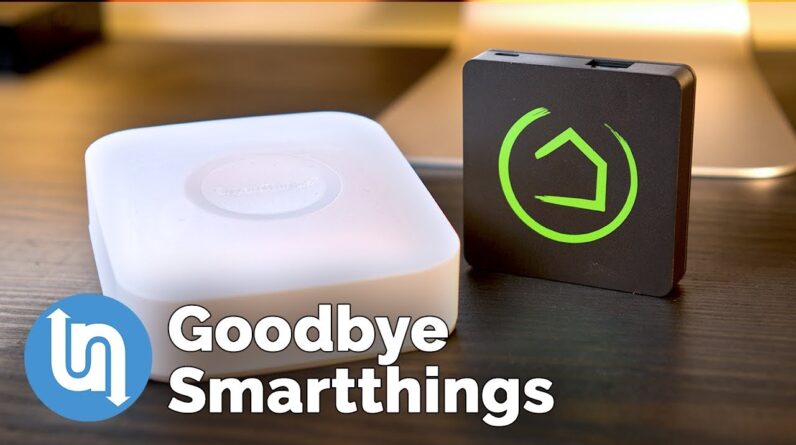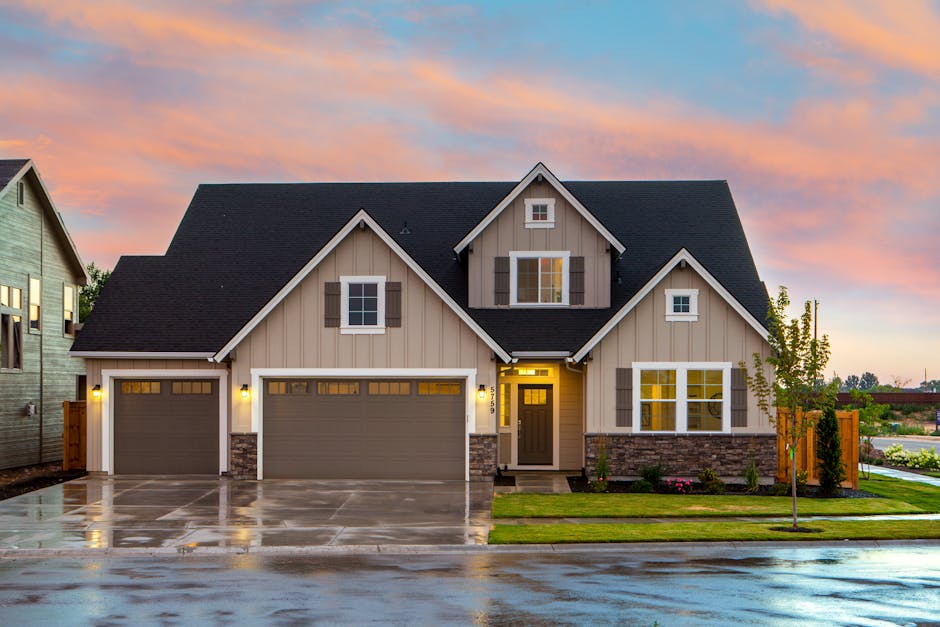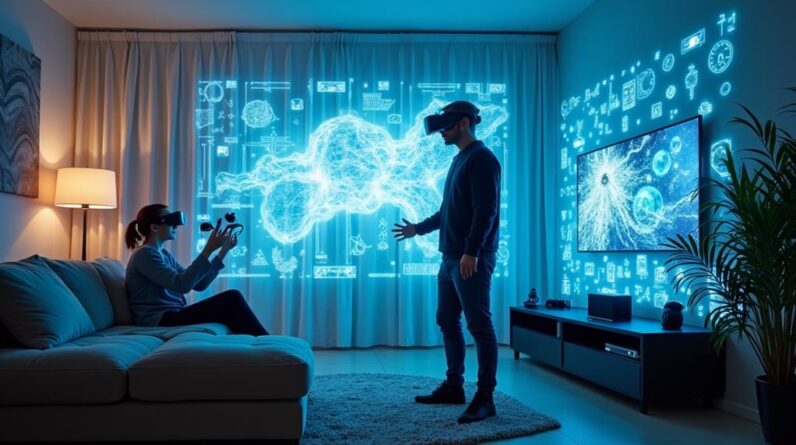
I’ve been on a quest. A quest for the perfect smart home platform. Something that can bridge the gap between
Z-Wave, Zigbee, and WiFi smart home devices. Something that’s platform agnostic and can
work with Google, Amazon, and Apple. Something easy to use and yet highly customizable. And even more important, a system that I have
complete control over and has my privacy and data secured. Does that system exist? No. I might as well be hunting a unicorn. Is there anything that comes close? Yes … sort of.
Today I’m going to be taking a look at the
Hubitat Elevation hub, which is a crazy customizable smart home hub that can bridge the gap for
a lot of different devices and services. And it comes really close to that mythical
unicorn. But before I dive in take a moment and hit
the subscribe button, so you don’t miss out on future videos like this one. I’m Matt Ferrell … welcome to Undecided. I’ve got a pretty extensive smart home setup,
which has used Smartthings as the backbone for most of it for some time now. But ever since Samsung bought Smartthings,
they’ve been slowly absorbing and integrating Smartthings into Samsung’s systems. While the platform has been pretty reliable,
it was the nudge I needed to make sure my smart home is as platform agnostic as I can
make it.
If you’ve watched my other smart home videos,
you know my first rule is to buy gear that’s as cross platform as you can get. The benefit is that if you aren’t happy
with one service you can switch to another fairly easily. Kind of like my jump from Amazon Alexa to
Google Assistant for voice commands. And now, jumping from Smartthings to something
else. And before anyone jumps into the comments
and shouts, “just use Home Assistant!” I know. I have. It ticks most of the boxes I’m looking for. It supports almost all of the major services
and voice assistants.
It’s self-hosted with privacy and data under
your own control. It’s open source, so it’s free … and
has a vibrant community making constant improvements. But … it’s got a ways to go with usability
and stability. In the 6 months I’ve been trying Home Assistant
out on multiple platforms, it’s crashed numerous times; had odd bugs; and while I
didn’t have trouble getting things up and running, it’s got a steep learning curve
that prevents me from recommending it to the average Joe. That’s where Hubitat enters the picture.
I reached out to Hubitat a few months ago
and they were kind enough to send me a hub and a couple of devices for testing, and for
the past 6 weeks I’ve been kicking the tires. What do I think? The short answer: I think I found my Smartthings
replacement. The long answer: it’s great … but I’m
not sure it’s for everyone. The biggest selling points for Hubitat:
Self-hosted and local automation processing.
No reliance on cloud services to make things
work … unless you want to integrate them. This makes it super fast and secure. Affordable. It only costs $79.95 for the U.S. version
and no subscription fees. Works with August, Ecobee, GE, Ikea, IFTTT,
Lutron, Iris, Philips Hue, Smartthings, Sonos, and a lot more. And finally, extensive customization options. The biggest downside:
The extensive customization options.
It’s literally a blank slate when you plug
it in for the first time. And if you aren’t familiar with setting
up a smart home, it could be daunting. I know the idea of a hub really turns some
people off, but not me. Especially for something like this, which
is incredibly small and low power. In fact, it’s small enough to tuck into
a closet and stash it out of view.
The initial setup process requires you to
register your hub and visit a web portal to complete the setup process. It’s a pretty simple procedure with naming
your hub, entering your location, and ending up on the main dashboard. It even helps nudge you in the right direction
by adding your first devices to the system. But this is where most smart home systems,
just like Home Assistant, really struggle. With the wide variety of supported devices
and different technologies like WiFi, Zigbee, and Z-Wave, it puts the pressure on the novice
to understand what technology their device is using to understand how to proceed with
the setup process. From my experience, the instructions for individual
devices, like smart outlets, are all over the map.
It’s like the wild west when stepping out
into the untamed smart home frontier. If you do have a good device with decent instructions,
the process can be pretty straight forward. Like adding the Zigbee smart outlet Hubitat
provided me, which starts with putting the hub into Zigbee pairing mode. Then plugging in the smart outlet and waiting
for Hubitat to find it. Once it does you click on the device to finish
the pairing and name it. This is where things get … interesting. The Habitat’s first time user experience
gave some brief explanations about needing to setup “Apps” to make things work and
give your hub the controls you want and need. This is where the blank slate issue starts
to show up. There is absolutely nothing preinstalled,
so you can’t automate devices in any way yet. Now, if you’re not familiar with your typical
smart home systems and terminology, you’ll probably feel a bit lost here. You need to install a handful of apps just
to give the system a baseline of smart home functionality, like the Mode Manager, Rule
Machine, and Dashboard manager.
These really should be installed by default
or included as part of an extended first time user setup experience. You need the Mode Manager in order to set
up things like “I’m home” or “I’m away” modes for your house. Rule machine is necessary in order to do things
like automatically turn lights off when you leave or turned on when you return home. You can then have a Rule Machine rule for
turning off every light in the house and dropping the temperature when the house is in “I’m
Away” mode. See where I’m going with that? The two apps kind of go hand in hand and are
essential for setting up smart home automations.

The next essential thing you have to setup
is the Dashboard manager. And yes, it’s another thing that’s essential
and not really an option. Without Dashboards, turning things on and
off with your phone or computer is pretty difficult. I ended up creating Dashboards for each room
in my house, as well as a high level “Home” dashboard. Dashboards surface a series of buttons, switches,
and indicators for your selected devices that let you know what’s on or off at a glance.
With a single tap you can turn on a light
or activate a scene, which is a setting for a group of lights and devices. And that leads me to the mobile app. If you install the Hubitat app on your phone,
you can use your phone as a presence sensor to let the hub know when you’re home or
away. Since the hub is built to not rely on cloud
services and be completely local and secure, you can’t access your system when away from
home out of the box.
That is, unless you set up dashboards and
link them to the Hubitat cloud. With your Dashboards syncing and accessible
with remote access, you’ll see those shared Dashboards in the mobile app. Without those Dashboards, you’ll have zero
control of your smart home away from home. Another reason why the Dashboard manager should
be pre-installed and a key part of the first time user setup experience. I didn’t have any major roadblocks when
adding dozens of devices, setting up modes, and automation routines. Also, no problem linking Hubitat up to a handful
of cloud services like Google Home for voice assistant support and IFTTT. But to be fair, I’m pretty well-versed in
smart home setups and knew what to look for as I was setting up the system. A novice would have a bit of a learning curve
getting this going. Here’s where I think Hubitat starts to shine.
I was able to replicate the majority of core
modes and automation routines that I’ve been using on Smartthings for years. It means that from a day-to-day perspective,
you wouldn’t know that I changed anything at all. The speed of the local automations is blazingly
fast. I have Z-Wave light switches, Lutron light
switches, and Philips Hue lights sprinkled around my house. With a Lutron Pro Bridge, Hubitat is able
to issue commands locally to my Lutron lights just like it can for my Philips Hue and Z-Wave
switches. The lights all turn on and off instantly. There’s no noticeable delay at all, which
is one of the major strengths of having a local automation powered system that doesn’t
have to issue commands over the internet.
Both my wife’s iPhone and mine have worked
reliably as presence sensors for the Hubitat system, which automatically triggers home
mode changes and a cascade of automations for changing our Ecobee temperature, turning
lights on and off, and activating security cameras. Like I mentioned before, I’ve been able
to seamlessly flip over a sizable portion of our Smartthings devices and routines to
Hubitat. I’m still slowly porting things over or
figuring out a few workarounds for things that don’t cleanly port over, but it’s
been rock solid.
No system crashes. No outages. Hubitat software updates have been applied
without any hiccups or issues. Again, rock solid. In most cases, you shouldn’t have to use
your phone much to use your smart home setup. Once modes and routines are setup, the system
should take care of itself the vast majority of the time. One-off controls can be handled through smart
switches, buttons, or voice commands, but the Hubitat dashboard controls in the mobile
app work fairly well. It’s not a pretty interface, but it’s
functional and gets the job done. The quirks are that it’s not responsively
designed, which means the buttons and interface elements don’t scale to fit the size of
the screen. On your phone you’ll have to scroll side
to side to see all of your buttons.
On desktop, you may have a lot of dead space. I’ve spent years designing and developing
user interfaces that display well on any size screen, so I’m not sure why the Hubitat
system was built out this way. Hopefully it’s something they can address
easily in an update and it doesn’t take a lot of refactoring to pull off. I love systems like this because they can
act as the backbone and glue for your smart home. I can have Lutron lights working as part of
the same scene as Philips Hue and Osram lights. I can have both Amazon and Google voice assistants
linked into the system at the same time if I wanted. If I run Homebridge, I can even link everything
into Apple’s Home app, which is something I’ve been working on recently. Hubitat reminds me of the Smartthings platform
and community before Samsung bought it. There are a lot of people in the community
that are porting Smartthings apps to the Hubitat platform, or writing their own apps and sharing
with everyone. It’s an extremely reliable system that’s
fast and secure. The data-privacy-first user experience design
creates some challenges you have to work around, like not being able to interact with every
element of your smart home away from home.
You won’t be able to change things like
system settings or rule machine setups through the app, but you can activate any modes, routines,
and devices that you’ve shared within a Dashboard. And the blank slate setup experience can be
daunting, but once you have the dashboards set up and accessible through the mobile apps,
you should be good to go there too. It’s tightly locked down for privacy by
default, but you can open it up in limited ways to get the best of the local and cloud
services worlds. So who is this system for? People who want a reliable and data-privacy-first
smart home solution. I think it’s a great option for the technically
inclined or people that have some familiarity with smart home systems, like myself. I would not recommend it for a smart home
newbie, but then again, if you’re a newbie you should be starting small and simple. Buy gear that’s as widely supported as possible
and add in the Hubitat later when you want more controls and integrations than simpler
solutions can offer you.
Hubitat would be like jumping into the deep
end of the pool, but for those of us already swimming around, it’s definitely worth a
look and consideration. And for folks just getting started with smart
homes, stay tuned because I have a smart home 101 series of videos coming that should help. Anyone else used Hubitat? Jump into the comments and let me know what
you’re experience has been. And let me know if you’d like to see more
details about Hubitat setup and use. And if you liked this video, be sure to give
it a thumbs up and share with your friends because it really helps the channel. There are some other ways you can support
the channel too. Check out my SFSF Shop for some cool Tesla,
Space X, science, and Undecided shirts. There’s also other links in the description
for some great Tesla accessories and discounts. And as always, an extra big thank you to all
of my Patreon supporters.
Your support is really helping to make these
videos possible. If you're interested in early access to videos
and behind the scenes posts, check out my Patreon page for additional details. And if you haven’t already, consider subscribing
and hitting the notification bell to get alerts when I post a new video. And as always, thanks so much for watching,
I’ll see you in the next one..
As an Amazon Associate I earn from qualifying purchases.







